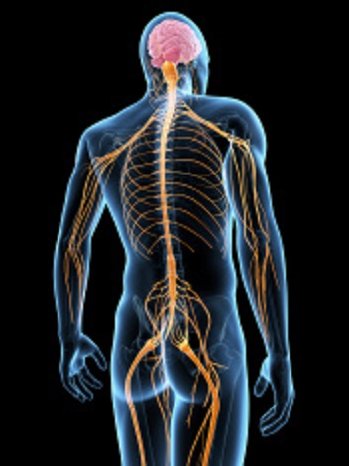Posted by: Steve Rolston, Medical Device MES Expert, Critical Manufacturing
FACTORIES AS LIVING BEINGS
Factories behave like living organisms. They think, they eat, and if they get hurt, they feel pain.
In this article we will discuss the role of Manufacturing Execution software in the Factory and how it can facilitate Agile Manufacturing.
WHAT IS AN MES? WHY WOULD I WANT ONE?
MES stands for Manufacturing Execution System. What, exactly, does that mean? Are we about to kill manufacturing?
An MES is an information system that TRACKS, REPORTS and CONTROLS the act of manufacturing. The “Execution” part is talking about the ACT of manufacturing. What kind of manufacturing? Well, almost any kind of manufacturing, actually.
MES systems were an outgrowth of a project begun back in 1978 in the Semiconductor industry to control the manufacturing process for Silicon Wafers. Semiconductors, for those that may not already be aware, are the chips that are used in everything from spacecraft to greeting cards.
The manufacturing process to make these chips involves hundreds of individual steps over a period of weeks or months and is extremely expensive. The cost of a single batch of 25 silicon wafers, after processing, can exceed $250,000 US dollars. These wafers are effectively made of glass, are carried in a plastic case about the size of a gym bag, and one careless operator can destroy dozens of them with one false setting on an oven in a matter of hours.
Such a risk rationalized the funding to develop a major new class of software to prevent such errors from occurring. The team that developed this project realized that any factory using expensive, complex processes would need such controls. Thus the first commercial MES systems were born, targeted in the beginning at the semiconductor industry. Since that time there have been dozens of commercial MES systems developed. Some were targeted at a specific industry and others were more generalized.
MES AND THE OTHER BUSINESS SYSTEMS IN THE FACTORY
How does an MES fit in with the other business systems that are already in use at a factory? The biggest, most expensive and by far the most popular information system in a factory today, is the ERP. That stands for Enterprise Resource Planning and since the 1990’s almost every major manufacturing company has one.
ERP is the system that tracks financials, purchasing, inventory control and planning. The ERP industry did an excellent job of demonstrating their value in terms that every Chief Financial Officer could understand. They could fund the entire project off the savings in inventory control alone. When companies realized this, everyone had to have one.
Many factories also use automation in the form of tools, driven by software that perform large expensive processes in ways that could never be replicated at the same level of price/performance/quality that humans could. Almost all factories use operators in one fashion or another, even if it is just to monitor the automation. Together the automation and the operators form the direct labor portion of a factory.
So, how do these two systems (ERP and Direct Labor) connect? In many factories, they don’t. The ERP sits in its ivory tower making plans and gathering financial data and the engineers and the operators control the tools, but direct labor seldom talks directly to the ERP.
This is where the MES comes in…
THE FACTORY AS A BODY
To demonstrate, imagine that the information in a factory is like a body. (Image)
In the example the brain is the ERP. It makes plans, recognizes pain and is responsible for carrying out conscious decisions.
The direct labor components of automation and human operators that do the work are like the hands and feet of the organization. They are the ones that actually carry out the tasks that the brain commands. They are the ones that experience pain, even if the brain cannot feel it.
The MES is the spinal cord and nervous system. It is the system that connects the ERP to the shop floor. It communicates the directives of the brain to the systems that actually carry those instructions out. It is the system that transfers the experience of pain to the organ that can actually do something about it. It even can have built-in reflexes to deal with pain before the brain even realizes that anything has gone wrong.
This describes perfectly the role of an MES in the factory. It is the system that recognizes what is actually happening. It takes orders from the ERP (Manufacturing Orders in this case), converts them into Work Orders and feeds them to the shop floor. There, the dispatching system in the MES issues the order to each step in the manufacturing process and the operators and the tools operate on it. Should there be any issue that arises, such as low yield, delays in manufacturing or so on, it is the MES that first recognizes this.
In the majority of factories today they have the brain (ERP) and the hands/feet (Operators & automation) but they do not have the spinal cord (MES). It is easy to see why there are so many issues that arise in factories and why they are often so difficult to resolve.
DO ALL FACTORIES NEED AN MES? BE THE CHEETAH...
Do all factories require MES? Actually, no. Just as there are animals in nature that do not have a spine such as mollusks (clams and such) and creatures with a small, simple structure there are factories that have very simple, manual operations where an MES is not required. They are characterized by low production volume, a small set of products that they can produce, or products that have low value. But that is a small percentage of the factories that are out there.
If your factory wants to be agile, if the cost of delays and low yield can seriously impact the bottom line, or if there are regulatory requirements to keep a history of what has been produced and how it was produced then an MES is practically mandatory.
So, if you want to have your factory be more like a cheetah than a clam, you want a spine.
MORE INFORMATION ABOUT HOW AN MES CAN MAKE YOUR FACTORY MORE AGILE
There will be more articles on the specific functions of an MES and how they enhance/enable manufacturing as well as experiences with actual factories deploying and using MES systems.
To see more information about MES systems and how they can help make your factory more agile follow this link: What is an MES?
ABOUT STEPHEN ROLSTON (Image)
With 35 years in IT doing development, design and deployment of information systems, Steve is focused on Critical Manufacturing MES (Management Execution Systems). Primary systems include Critical Manufacturing's cmNavigo MES as well as experience in Camstar's InSite manufacturing, including Medical Device Suite and Semiconductor Suite. His primary role is Solution Architect. Secondary roles include validation testing, modeling, debugging, installing, and design of business systems for manufacturing. Steve's specialties are: cmNavigo MES, Camstar Manufacturing MES; SQL Server database and HP Application Lifecycle Management (HP-ALM)



